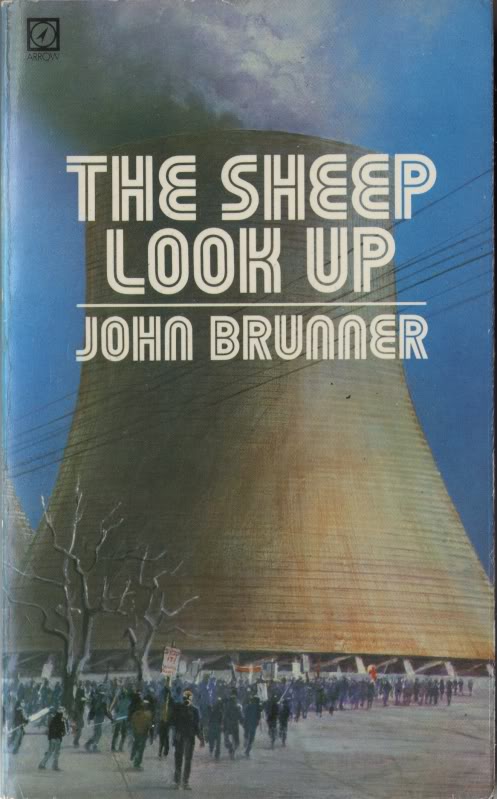John Brunner
By:
September 24, 2009

The popularity of apocalyptic fiction in the Sixties (1964-73), it has been suggested, indicates that SF writers had become bored and suspicious of utopian idylls promising that ameliorative reforms could right modern civilization’s manifold wrongs; instead, they wanted to wipe the slate clean. The British SF author and left-wing activist JOHN BRUNNER (1934-95), whose overpopulation novel Stand on Zanzibar beat out Philip K. Dick’s Do Androids Dream of Electric Sheep? for a Hugo in ’69, and whose terrific novel The Sheep Look Up (1972), imagined an Earth destroyed by pollution, was one such anti-anti-utopian. Brunner was prolific — in ’68, he published not only Zanzibar, but Bedlam Planet, Catch a Falling Star, Father of Lies, and Into the Slave Nebula, as well as a story collection. His proto-cyberpunk tale, The Shockwave Rider (1975), was the first to describe software that reproduces itself across a computer network as a “worm.” (Hmm — burrowing worm-critters also wreak havoc in The Sheep Look Up.) Not merely an astute futurist, Brunner was a postmodern stylist whose best-known fictions employ multiple viewpoint storylines, interspersed newspaper headlines, and the like. Fredric Jameson claims, and I agree, that to read Brunner’s apocalyptic novels is to experience, at the level of form, the noncoercive utopian social order that the author fervently believed was possible — even though he steadfastly refused ever to name or describe it.
NEW WAVE SCI-FI at HILOBROW: 75 Best New Wave (1964–1983) Sci-Fi Novels | Back to Utopia: Fredric Jameson’s theorizing about New Wave sci-fi | Douglas Adams | Poul Anderson | J.G. Ballard | John Brunner | William Burroughs | Octavia E. Butler | Samuel R. Delany | Philip K. Dick | Frank Herbert | Ursula K. Le Guin | Barry N. Malzberg | Moebius (Jean Giraud) | Michael Moorcock | Alan Moore | Gary Panter | Walker Percy | Thomas Pynchon | Joanna Russ | James Tiptree Jr. (Alice Sheldon) | Kurt Vonnegut | PLUS: Jack Kirby’s Golden Age and New Wave science fiction comics.
Each day, HILOBROW pays tribute to one of our favorite high-, low-, no-, or hilobrow heroes on that person’s birthday.
READ MORE about men and women born on the cusp between the Postmodernist Generation (1924-33) and the Anti-Anti-Utopian Generation (1934-43).
READ MORE HiLo Hero shout-outs.
SUBSCRIBE to HiLo Hero updates via Facebook.
SHARE this post, by clicking on the toolbar below.
